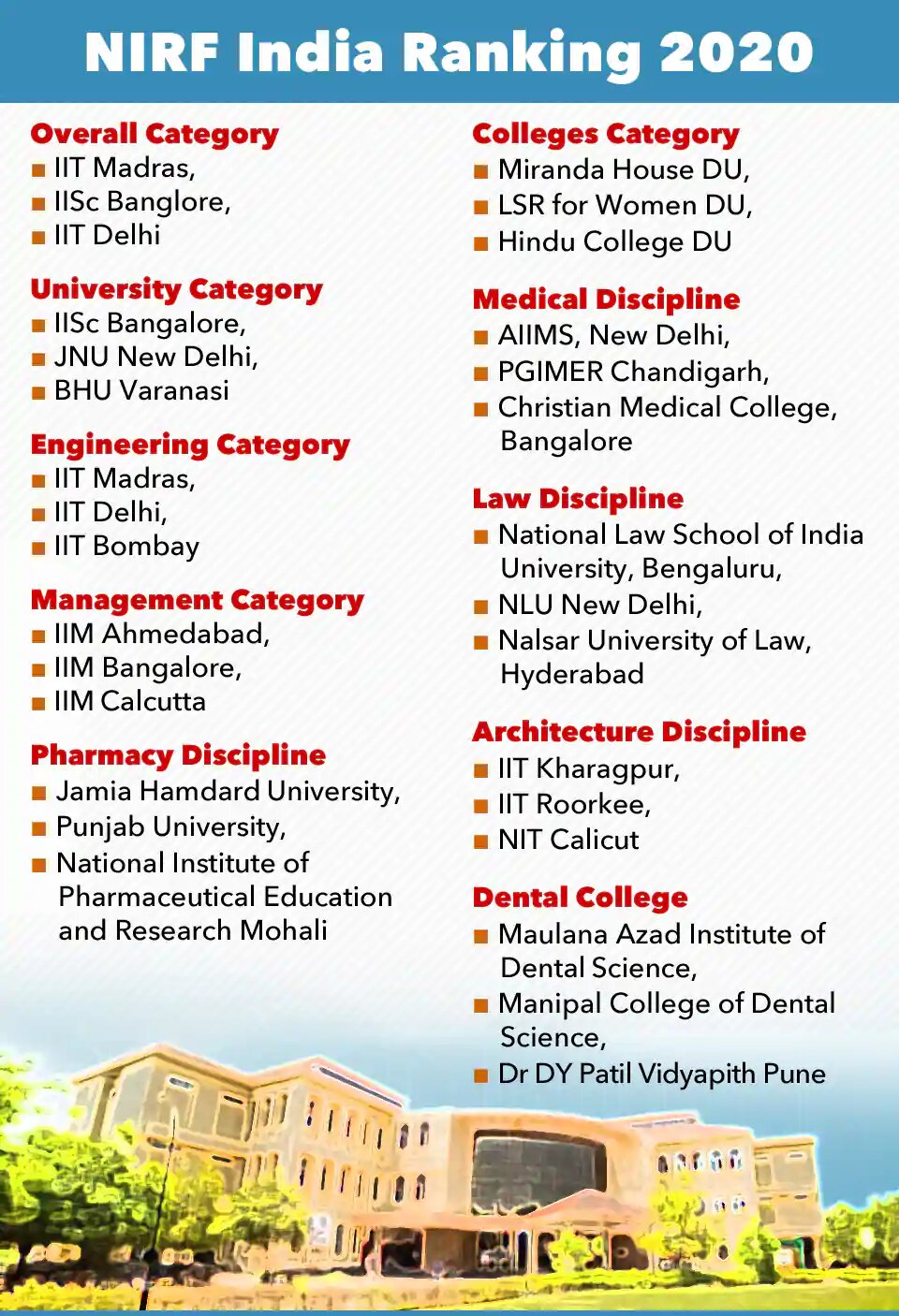Governance
India Rankings 2020: NIRF
- 12 Jun 2020
- 3 min read
Why in News
Recently, ‘India Rankings 2020’ of Institutions of Higher Education was released.
- These rankings come days after the QS World University Rankings which showed that India’s best institutions like Indian Institutes of Technology (IITs) and Indian Institute of Science (IISc) have slipped in the global list.
Key Points
- The Ministry of Human Resource Development (MHRD) has taken this important initiative of creating a National Institutional Ranking Framework (NIRF), which has been used for the past five years for ranking institutions of higher education in different categories and domains of knowledge.
- NIRF was launched on 29th September 2015.
- Objective: To encourage institutes to compete against each other and simultaneously work towards their growth. In addition, these rankings also attract foreign students, providing a solid base for the ‘Study in India’ programme for the growth of higher education in India.
- NIRF is one of the criterias for private institutions assessment for the Institutions of Eminence (IoE) Scheme.
- IoE Scheme is a government's scheme to provide the regulatory architecture for setting up or upgrading of 20 Institutions (10 from public sector and 10 from the private sector) as world-class teaching and research institutions.
- NIRF outlines a methodology to rank institutions across the country. The methodology draws from the overall recommendations and broad understanding arrived at by a Core Committee set up by MHRD.
- Broad Parameters:
- Teaching, Learning and Resources.
- Research and Professional Practices.
- Graduation Outcomes.
- Outreach and Inclusivity.
- Peer Perception.
- 90% of the parameters in NIRF are completely objective and fact-based, while only 10% is based on the subjective parameter of perception by academic peers and employers.
- In international rankings, Indian institutions’ low ranking is due to the high weightage given to the perception which is a subjective parameter.
- It is acknowledged that Indian institutions struggle on the “internationalisation” parameter in global rankings and the NIRF rankings are believed to reach a point where international institutions will want to be included in the Indian ranking system rather than vice versa.
- Overall, 3,771 institutions registered in the ranking framework this year which is a 20% increase in comparison to 2019.
- This is the fifth consecutive edition of these rankings. This year ‘Dental’ category has been introduced for the first time bringing the total tally to 10 categories/subject domains.
- Rankings (top three):







